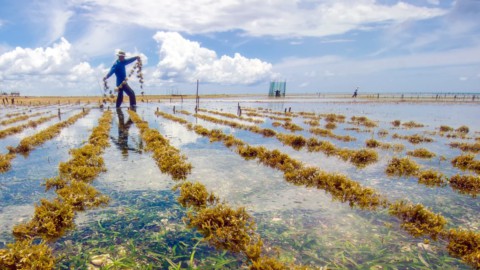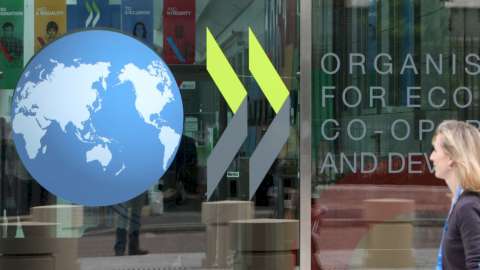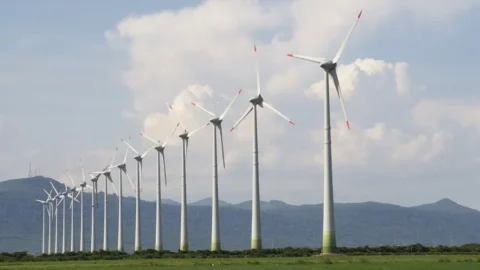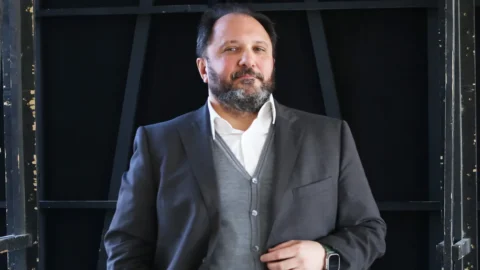Only 10 years, indeed now nine, for a real revolution. Thursday, September 23 opens in New York the Food Systems Summit, the first summit in history on food systems. The UN launches it, with a simple and clear slogan: Good food for all, good quality food for all. And a subsequent keyword: Good food is everything, good quality food is everything.
Four words that make it clear what is at stake. In fact, it is no coincidence that the Food Systems Summit has been included among the important events of the UN annual Assembly which opened on Tuesday and will last until the 27th, the first in which heads of state and government will return to participate after the frightening beating of Covid. Mario Draghi will be among the first to speak at the Summit, as president of the G20. At least 90 other heads of state and government (or their representatives) will follow him, from Congo to Russia, from China to the Republic of Fiji.
“We have a decisive period of 9 years ahead of us, up to 2030, to hit i 17 Sustainable Development Goals (Sustainable development goals, SDGs) defined by the UN in 2015”, he explains Paolo Silveri, Country Director for Latin America and the Caribbean of IFAD, the United Nations Fund for Agricultural Development, one of three UN agencies based in Rome. “Time is short, there is a lot of work to do”.
La Hunger in the world in fact, not only is it not defeated but the battle for food has slowed down after twenty years of progress and global economic growth. In part, the financial crises following 2008 had already dampened the drive for change; there Covid-19 pandemic it was an added element of difficulty.
But just Covid ended up giving the system a jolt. “It is now clear to everyone that there is one connection between nutrition and health also socio-economic of humanity”, adds Silveri. Hence the decision by UN Secretary General Antonio Guterres to launch a process of unprecedented consultations throughout the food chain from A to Z, which means from sowing, to production, to fertilizers, to marketing, to the consumption of food products. No less than 100.000 people in the world participated directly - including institutions, associations, activists, producers, indigenous peoples - but if the concept is extended to include their representation, the numbers rise dramatically. It is estimated that 18 million farmers have been involved in Asia alone, through representatives of their associations.
HUNGER HAS INCREASED AFTER THE PANDEMIC
“After Covid, people who don't have enough food have passed from 690 million to more than 800 million. Last year alone, 110 to 135 million were added. It is equivalent to saying that about 10% of the world population does not have enough to eat”, are the data listed by Paolo Silveri. “But the most worrying thing – he adds – is that if we look at the quality, almost one in 2 people in the world cannot afford a proper diet. The fact that more than 3 billion people are not able to afford income a healthy diet unloads a huge set of problems on the communities”.
To the tragedy of 4,6 million dead for Covid on a global level, we add the enormous expense that governments face to remedy the damage - health, social, economic - caused by food shortages and inequalities.
FOOD, HEALTH, CLIMATE, MIGRATIONS: EVERYTHING IS KEPT
“Il agricultural and food system as a whole it is valued globally at about 10.000 billion dollars a year – continues Paolo Silveri – but the negative repercussions on the environment and on health of insufficient or poor quality food are far greater. The World Bank estimates these "negative externalities" at around 12.000 billion a year, other sources indicate higher estimates and in any case higher than the value of production. It is clear that we are faced with a situation that is no longer sustainable".
The problem is that while in the field of energy the awareness that the energy transition towards renewable sources is a process with no return, nor is the fact that the food transition it can no longer be postponed. And what can, yes, do as a flywheel for recovery post Covid 19 as well as accelerating the realization of the 17 UN SDG objectives.
FOOD SYSTEMS SUMMIT, THE OBJECTIVES
The expectation for what will be decided next Thursday, therefore, is great. “The fact that a year and a half has been worked on to prepare the Summit gives us hope that it will be the beginning of a concrete process in which governments engage with precise actions, with public policies and investments to get to feed everyone and in a balanced and healthy way”.
Un first goal will be the commitment to review the incentives that have promoted the consumption of high-calorie or poor-quality foods, and which have led to an increase in the quantity produced with agricultural policies based on intensive soil exploitation, the abundant use of pesticides, the concentration of land in few hands, upsetting delicate social balances. The food system is responsible for 37% of emissions of greenhouse gases globally. That is, one third of global emissions are used to produce food. L'junk food, the addition of sugars in drinks and foods lead to an increase in childhood obesity, a greater diffusion of diabetes and cardiovascular diseases that manifest themselves before their time.
Second goal, push innovation and make it accessible to all: today 500 million small farmers do not have access to innovation – crucial for attracting young people – nor can they pay for it.
Third goal, promote investment. “The estimated need to promote transformation of the global food system is valued at 300-350 billion dollars a year. The estimated benefits and multiplier effect reach 5.700 billion dollars a year in terms of jobs, lower health care costs, reduction of food emergencies, migrations. So far, enormous human and financial costs have been faced, instead it would be better to invest in a healthier diet and to ensure a dignified life for everyone”.
THE FOOD TRANSITION AND THE IMBALANCES TO BE CORRECTED
In conclusion, we need to completely rethink the system. All of this requires resources and political decisions that the states, with public finances weighed down also by the costs of the pandemic, cannot address alone. “Public Development Banks can play an important role, such as the Brazilian National Bank for Economic and Social Development (Bndes) or Cdp in Italy. Small farmers produce on average over 30% of the world's food needs and in some countries the percentage rises to 70-80% but they cannot afford a healthy diet. AND an unacceptable contradiction”says Silveri. “They are the ones who suffer most from climate change and are on the front line to fight it but receive only 1,7% of the important resources allocated by governments to combat global warming. There are huge imbalances to correct in everyone's interest".
There are also huge opportunities, especially for countries – such as Italy – where the enhancement of local products, healthy food culture, productions of controlled origin can play an important role. A huge asset to be exploited.
The purpose of the Summit is therefore to arrive at concrete actions. FAO, IFAD and the World Food Programme they will be responsible for monitoring their implementation at the individual country level.





